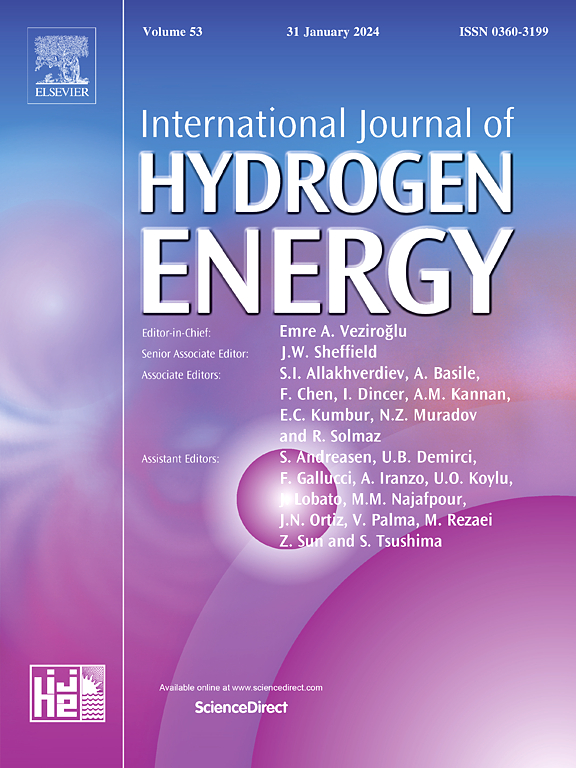Modeling the thermophysical properties of alumina nanoparticles enhanced ionic liquids (NEILs) using advanced intelligent techniques
IF 8.1
2区 工程技术
Q1 CHEMISTRY, PHYSICAL
引用次数: 0
Abstract
Ionic liquids (ILs) are promising alternatives to conventional heat transfer fluids (HTFs) in thermal energy systems. This paper uses advanced machine learning (ML) approaches, specifically Cascaded Forward Neural Networks (CFNN) and Generalized Regression Neural Networks (GRNN), to predict the thermophysical properties of Alumina (Al2O3) nanoparticles in a binary mixture of water and the ionic liquid [C2mim][CH3SO3]. Various optimization methods, including Bayesian Regularization (BR), Scaled Conjugate Gradient (SCG), and Levenberg-Marquardt (LM), were applied to enhance CFNN model performance. Alumina mass concentration and temperature were used as input parameters to predict specific heat capacity, thermal conductivity, and density, whereas shear rate and Alumina mass fraction were used for viscosity prediction. Results demonstrated that the CFNN model optimized with the LM algorithm closely matched experimental data, achieving average absolute percentage relative errors (AAPRE) of 0.2519 %, 0.2910 %, 0.0088 %, and 0.5937 % for specific heat capacity, thermal conductivity, density, and viscosity, respectively. Sensitivity analysis showed Alumina concentration strongly affected viscosity, density, and conductivity (r = 0.26, 0.92, 0.91), while temperature most influenced heat capacity (r = 0.74). Trend analysis showed that the CFNN-LM model captured the actual trends in the thermophysical properties of nanoparticle-enhanced ionic liquids (NEILs), and the leverage method validated the data, confirming its authenticity.
利用先进的智能技术模拟氧化铝纳米颗粒增强离子液体(NEILs)的热物理性质
在热能系统中,离子液体(ILs)是传统传热流体(HTFs)的有前途的替代品。本文使用先进的机器学习(ML)方法,特别是级联前向神经网络(CFNN)和广义回归神经网络(GRNN),来预测水和离子液体[C2mim][CH3SO3]二元混合物中氧化铝(Al2O3)纳米颗粒的热物理性质。采用贝叶斯正则化(BR)、缩放共轭梯度(SCG)和Levenberg-Marquardt (LM)等优化方法来提高CFNN模型的性能。氧化铝质量浓度和温度作为预测比热容、导热系数和密度的输入参数,而剪切速率和氧化铝质量分数用于预测粘度。结果表明,采用LM算法优化的CFNN模型与实验数据吻合较好,比热容、导热系数、密度和粘度的平均绝对百分比相对误差(AAPRE)分别为0.2519%、0.2910%、0.0088%和0.5937%。灵敏度分析表明,氧化铝浓度对粘度、密度和电导率的影响较大(r = 0.26、0.92和0.91),而温度对热容量的影响最大(r = 0.74)。趋势分析表明,CFNN-LM模型捕捉到了纳米颗粒增强离子液体(NEILs)热物理性质的实际趋势,杠杆法验证了数据的真实性。
本文章由计算机程序翻译,如有差异,请以英文原文为准。
求助全文
约1分钟内获得全文
求助全文
来源期刊

International Journal of Hydrogen Energy
工程技术-环境科学
CiteScore
13.50
自引率
25.00%
发文量
3502
审稿时长
60 days
期刊介绍:
The objective of the International Journal of Hydrogen Energy is to facilitate the exchange of new ideas, technological advancements, and research findings in the field of Hydrogen Energy among scientists and engineers worldwide. This journal showcases original research, both analytical and experimental, covering various aspects of Hydrogen Energy. These include production, storage, transmission, utilization, enabling technologies, environmental impact, economic considerations, and global perspectives on hydrogen and its carriers such as NH3, CH4, alcohols, etc.
The utilization aspect encompasses various methods such as thermochemical (combustion), photochemical, electrochemical (fuel cells), and nuclear conversion of hydrogen, hydrogen isotopes, and hydrogen carriers into thermal, mechanical, and electrical energies. The applications of these energies can be found in transportation (including aerospace), industrial, commercial, and residential sectors.
 求助内容:
求助内容: 应助结果提醒方式:
应助结果提醒方式:


